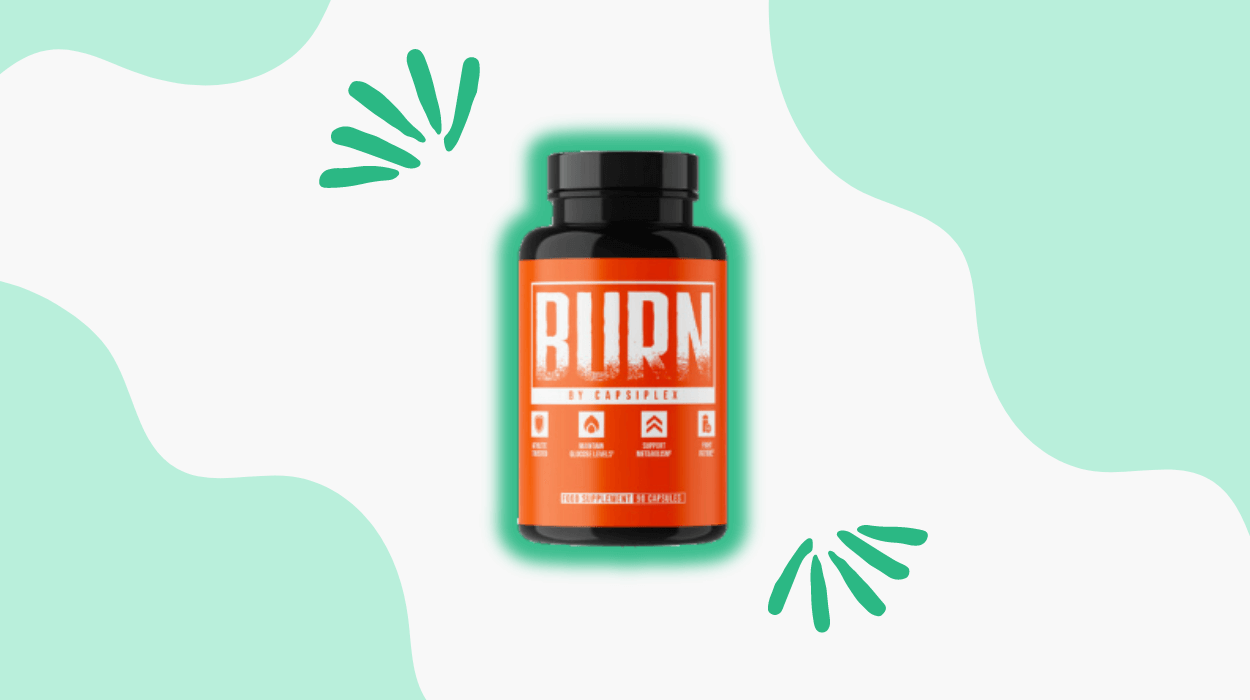

The distribution of belly fat in females varies depending on factors like hormones, stress levels, eating habits, or motherhood.
Women tend to store belly fat differently than men due to differences in muscle mass composition and metabolism between the two genders.
Regardless of your weight, having excessive belly fat could increase your risk of developing various health concerns. Some of these may include high blood pressure, joint-related issues, cardiovascular problems, sleep apnea, or high blood sugar (diabetes).
Maintaining a trim midsection may look aesthetically pleasing, mitigate health risks, and enhance longevity. Making healthy changes in your diet and increasing your exercise frequency could help you achieve a toned belly.
Understanding the factors influencing body fat distribution in women could help manage excess belly fat. Let’s look at the types of belly fat in women, including their causes and strategies for losing it.
The human body stores two kinds of fat, which are:

Fat deposition in the body may occur due to multiple factors, including the natural aging process, hormonal fluctuations, excessive sugar intake, and a sedentary lifestyle. These factors may lead to the accumulation of subcutaneous and visceral fat.
Fluctuations in estrogen hormone levels (the primary female sex hormone) may trigger the female body to accumulate excess fat around the thighs and hips. Hormonal conditions like PCOS or Cushing’s Syndrome may induce weight gain and increase fat accumulation.
A lack of physical activity could decrease overall muscle mass and metabolism, which may induce fat deposition in the body. Consuming foods high in trans fats, like processed or sugar-laden foods, may trigger insulin spikes and increase fat accumulation.
Elevated stress levels and sleep deficiency may increase cortisol (stress hormone) levels, which might enhance fat accumulation and induce weight gain.
The following table summarizes the factors behind fat accumulation in the body and their effects:
| Factors | Effects |
|---|---|
| Natural aging process | Slows down metabolism and leads to a decrease in muscle mass |
| Hormonal fluctuations | It might result in weight gain and fat deposition, especially in the abdominal area |
| Excessive sugar intake | Enhances fat storage and may increase the risk of insulin resistance |
| Excessive trans-fat intake | Increases the level of bad cholesterol and promotes fat deposition |
| Sedentary lifestyle | Reduces calorie expenditure and promotes fat accumulation |
Fluctuations in hormones, particularly estrogen and progesterone, may cause fat deposition near the lower belly area, often termed hormonal belly.
Polycystic ovary syndrome is a hormonal concern affecting women of reproductive age. This disorder may cause weight gain and difficulty losing fat, especially in the lower belly area.
You should consult a gynecologist or doctor to identify and treat any underlying hormonal imbalances like PCOS, thyroid dysfunction, etc.
Consuming lean proteins like fish, chicken, and cruciferous green vegetables could be beneficial. These foods are fiber-rich and could help support hormonal balance and weight management.
A tiered belly is often the result of a sedentary lifestyle and poor eating habits.
Tiered belly fat is recognized by two layers of fat around the abdomen, with a bulging upper torso that hollows near the belly button and then bulges out again.
Engaging in moderate to vigorous exercise daily, reducing unhealthy snacks from your diet, and refraining from alcohol and smoking may aid in preventing tiered belly fat.
After pregnancy, women may experience a type of belly fat known as ‘mommy’s belly fat.’ It hangs loose below the waistline due to stretched muscles and accumulated fat during pregnancy.
This post-pregnancy belly fat can be frustrating for many new moms as they strive to regain their pre-pregnancy figure.
Let’s look at its characteristics and how to address it:
| Characteristics of Mommy’s Belly Fat | Ways to Address Mommy’s Belly Fat |
|---|---|
| Hangs loose below the waistline | Start regular belly-targeted workouts a month after delivery. |
| Caused by stretched muscles | Perform lying leg raises and boat poses from yoga. |
| Accumulated fat from pregnancy | Eat a nutritionally adequate diet and take advantage of breastfeeding to burn extra fat. Breastfeeding may burn extra fat to support the mother’s and baby’s energy needs. |
The upper belly (located just below the ribs) often expands and bulges out in those who experience stressed-out belly fat. Factors like elevated stress levels and sleep deficiency may cause stressed-out belly fat accumulation.
Experiencing prolonged stress may slow down your metabolism and induce a feeling of fatigue, potentially contributing to fat deposition in your upper abdomen.
Adhering to healthy sleep habits (like creating a sleep schedule), performing low-impact yoga stretches, and not eating close to bedtime might help prevent a stressed-out belly.
Remember to listen to your body, take breaks when needed, and make time for self-care to mitigate the effects of stress on your overall health and well-being.
Bloated belly fat is characterized by a distended stomach with an increased overall girth, often accompanied by a feeling of fullness and tightness.
A bloated belly is not necessarily caused by excess fat deposition but by digestive disorders or specific food triggers. It may follow a cyclic pattern, with the belly being normal in the morning and increasing in girth as the day progresses.
Adopt a nutritious diet with foods and herbs that may aid in digestion, such as peppermint, chamomile, turmeric, fennel, or coriander. These herbs may soothe digestion and reduce bloating. Identify and eliminate specific food triggers like gluten or dairy that may aggravate your bloating.
Also See:
Physical activity, especially aerobic exercise, may significantly impact body composition. It may reduce circulating levels of insulin, which signals the body to hold on to fat. Regular exercise could help the liver to utilize fatty acids, reducing visceral fat deposits in the abdomen.
The amount of exercise needed to reduce belly fat varies among people. However, engaging in at least 30–60 minutes of moderate to vigorous exercise daily could benefit you. Activities like brisk walking, jogging, swimming, or skipping rope could be included in your routine.
Pairing cardio with strength training exercises could promote lean muscle mass development. Strength training may enhance your resting metabolism (the calories burnt when sedentary), helping shed belly fat.
Regular physical activity may support overall health and weight management. It could increase metabolism, improve cardiovascular health, boost mood, and enhance energy levels.
Weight lifting is a form of resistance training that includes weights or external resistance to target specific muscle groups. Lifting weights may cause micro-tears in the muscle fibers. As your body repairs these tears, it generates new muscle tissue, enhancing muscle mass.
Doing weight lifting helps improve overall body composition, as the more muscle you have, the more calories your body burns (even when you are sedentary). Weight lifting may preserve and enhance lean muscle mass, reducing body fat percentage and belly fat.
Adding moderate strength training to aerobic exercise helps cut fat and put on muscles. The combination may help you burn more calories throughout the day, allowing you to shed belly fat.
Add compound movements like squats, deadlifts, or chest presses to your weight training program. Doing so could aid in reducing fat mass and provide a toned midsection.
A research study compared the effects of a low-carbohydrate diet with a low-fat diet on heart health and weight loss. The study found that participants on the low-carb diet experienced a 10-pound weight loss, with a higher percentage of fat loss.
Focus on consuming complex carbs, such as legumes, vegetables, whole grains, and fruits, rather than simple carbohydrates from processed foods and sugary drinks.
Maintain a moderate carbohydrate intake by including healthy carbs like oats, brown rice, beans, quinoa, broccoli, sweet potatoes, or barley. These nutrient-dense foods support weight loss efforts and contribute to overall health.
Reducing belly fat requires adhering to a healthy diet and making informed food choices. Opt for fresh fruits, vegetables, lean proteins, and whole grains. These nutrient-dense foods provide essential vitamins, minerals, and fiber to support weight loss efforts.
Packaged foods and snacks often contain high levels of trans fats, added sugar, and added salt. These ingredients could make it challenging to lose fat. Minimize or avoid processed foods to support your weight management goals.
Stay mindful of the portion sizes of your meals and snacks. Use smaller plates and utensils, and listen to your body’s hunger and fullness cues. Eating slowly and savoring each bite might help prevent overeating and mitigate the risk of fat accumulation.
Some food products labeled low in fat may have more carbs and added sugars. Reading ingredient labels might help you identify hidden ingredients hindering your fat loss efforts.
Surround yourself with like-minded people who are focused on maintaining a healthy lifestyle. Research indicates that having social support could increase your chances of adhering to a healthy eating plan.
Adequate water intake could boost metabolism and promote weight loss. Drinking water could increase calorie burning and suppress appetite, making it effective in reducing belly fat.
As per a study by Anjali S. Joshi and Vinu A. Vij, drinking an additional 500ml of water (three times a day) before meals for eight weeks could significantly reduce body weight and body fat. These findings highlight the role of maintaining adequate fluid intake for fat loss.
Individual fluid needs may vary depending on activity level, climate, and overall health. However, you should drink at least eight glasses (64 ounces) of water daily to obtain its weight management benefits.
While water is the best choice for hydration, other beverages like herbal tea and unsweetened fruit juices may also contribute to your fluid intake. However, refrain from consuming sugary drinks and excessive caffeine, as they might contribute to weight gain.
Lack of sleep could disrupt appetite-regulating hormones and metabolism, leading to weight gain and belly fat. Research suggests that getting 7–8 hours of sleep each night may help regulate these hormones and promote the reduction of belly fat in females.
Inadequate sleep might lead to increased cortisol levels (stress hormone), which is associated with belly fat accumulation. Lack of sleep may increase insulin resistance, making it challenging for your body to regulate blood glucose levels, leading to excess fat storage.
Not getting enough sleep may raise the ghrelin hormone levels (increasing appetite) and decrease leptin hormone levels (disrupting fullness signals). Such hormonal imbalance may increase unhealthy food cravings, potentially inducing weight gain and belly fat.
Maintaining a dark, cool sleep environment, avoiding stimulants like caffeine close to bedtime, and refraining from electronic screens before bed may help induce quality sleep.
Losing belly fat is not an overnight mechanism; it requires a commitment to sustainable changes in your nutrition, exercise, and lifestyle practices. However, with the right mindset and approach, you may observe noticeable improvements in your overall health and physique.
Eating a calorie-controlled diet, engaging in regular physical activity, and following an active lifestyle may help reduce overall weight and body fat, including belly fat.
Moderating your carb intake, staying mobile, pairing aerobic exercises with strength training, and maintaining a moderate weight may help reduce belly fat. Do not hesitate to reach out to health professionals, nutritionists, or personal trainers for additional guidance and support.
Tyler Read earned an undergraduate academic degree from Sonoma State University, California and is a certified personal trainer (CPT) with NASM (National Academy of Sports Medicine). With over 16 years of experience, Tyler has trained clients both online and in-person.
He is passionate about helping others turn their love for fitness into a career. Tyler has worked with many local and commercial gyms before establishing his successful private personal training business, which he continues to operate.
